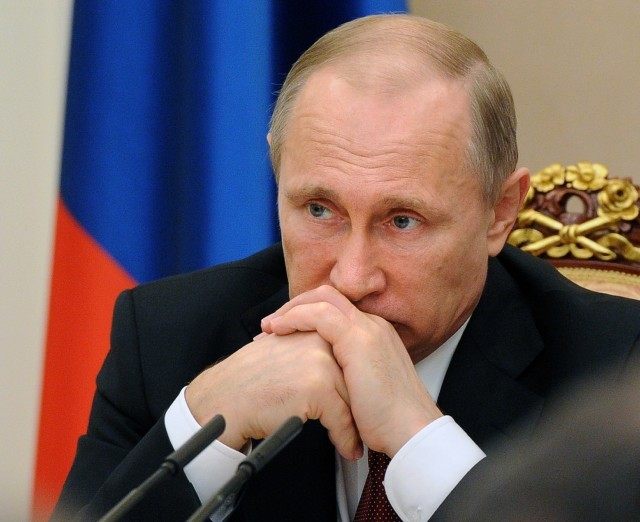Both Russia and the US filed declarations on carbon reduction forecasts with the UN this week. But while Russia’s 30 percent reduction headline figure looks on paper to beat Obama’s pledge of 26-28 percent reductions, all is not what it seems. (h/t NALOPKT)
President Obama has promised that the US will reduce carbon emissions by 26 – 28 percent from the baseline 2005 figure by 2025, almost doubling the previous commitment of 17 percent by that year. In order to achieve that, Americans are going to have to reduce emissions by 1.2 percent a year until 2020 – and then by up to 2.8 percent a year to 2025.
The Heritage Foundation estimate the costs at $2.5 trillion, equivalent to $7,000 per person, and the loss of up to a million jobs as America moves away from abundant fossil fuels to costly and unreliable renewable energy.
President Putin, meanwhile, has suggested that Russia could reduce carbon emissions by 25 – 30 percent from 1990 levels, in part using forests to offset emissions through carbon sequestration. However, not included in the text of the statement is the fact that Russia’s carbon emissions have already fallen by 77 percent on 1990 levels thanks to the collapse of Communism, which swept away much of Russia’s outdated and dirty heavy industry.
Furthermore, Russia’s ambition is “subject to the maximum possible account” of using Russian forests as carbon sinks. Currently only actively managed forests are included in the calculations, but Russia wants to include all of it’s forestry land – half of it’s land mass – in future calculations.
According to Finnish climate expert Matti Kahra: “Unlimited forest sink use would wipe 24 percent of their total emissions away instantly,” bringing them within the lower range of the target without making any cuts to carbon dioxide output at all.
And Russia has said that the “final decision” on their commitment will depend both on negotiations at the UN table in December, and on commitments by the world’s “major emitters”. Currently the world’s top emitter of greenhouse gasses is China, which similarly pulled the wool over Obama’s eyes last November by agreeing an emissions plan with the US President which was slammed as “meaningless” by blogsite Global Warming.
Following a meeting with Obama, China’s President Xi Jinpeng announced that Chinese carbon emissions would peak by “around 2030, with the intention to try to peak early, and to increase the share of non-fossil fuel share of all energy to around 20% by 2030.”
Al Gore hailed the deal as “groundbreaking” and “a major step forward in the global effort to solve the climate crisis. … these actions demonstrate a serious commitment by the top two global polluters.”
Former Senator Timothy Wirth, who helped prepare the groundwork for the 1997 Kyoto Protocol said in a written statement: “Today’s announcement is the political breakthrough we’ve been waiting for…. If the two biggest players on climate are able to get together, from two very different perspectives, the rest of the world can see that it’s possible to make real progress.”
But Li Junfeng, a Chinese climate policy adviser linked to China’s state planning agency, admitted “The statement is an upbeat signal to motivate other countries, but the timeline China has committed to is not a binding target.”
Paul Homewood at the Not A Lot of People Know That blog commented: “It looks like they are queuing up to make an idiot of Obama.”

COMMENTS
Please let us know if you're having issues with commenting.